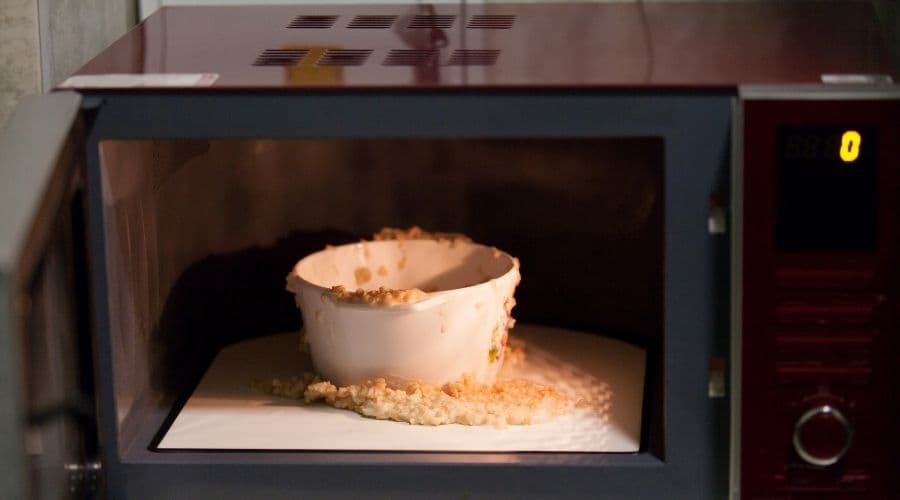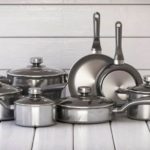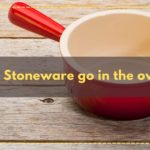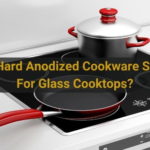Can Ceramic Cookware Go in the Oven?

Ceramic cookware is made from natural materials and is free of chemicals or other harmful substances. This makes it a very safe option for cooking, especially when compared to other types of cookware.
If you’ve ever cooked with ceramic cookware, you know that it’s eco-friendly and non-toxic, and is incredibly easy to clean.
It is one of the best choice beginner cooks because it is easy to use, but the question is can ceramic cookware go in the oven?
Here’s what you need to know about using ceramic cookware in the oven.
Type of Ceramic Cookware
The very first thing you need to know about ceramic is we have 2 different types of cookware in the market, ceramic coated and true ceramic.
Ceramic coated cookware is not 100% ceramic, it is a metal pan with a ceramic coating on it. The best thing is it is oven safe but you should not use ceramic-coated cookware at a high temperature of more than 600 Fahrenheit in the oven because the high heat can cause the coating to peel or flake off.
However, it is important to check whether your ceramic coated cookware is oven-safe before using it. If you are not sure, I recommend checking the user instructions that come with the cookware and look for the oven-safe pan symbol.
True ceramic cookware is made from a clay material and is glazed with another type of ceramic. This type of cookware can go in the oven and it can withstand up to 2500 degrees Fahrenheit temperature.
Internal Material
When we say internal material of ceramic cookware it is referring to the metal that is used inside the ceramic cookware. The most common are aluminum, stainless steel and copper.
The ability to use ceramic cookware in the oven also depends on the internal material of the cookware.
Cookware Parts
Cookware parts like handles, lids, and design also come into play when we talk about using ceramic cookware in the oven.
For example, if your ceramic cookware has a wooden or plastic handle, the chances are it may not be oven-safe.
Design
The design of the cookware also matters, if your cookware has a lot of intricate designs, it is better to avoid using it in the oven.
The reason for this is when cookware is heated in the oven, the adhesive used to attach these designs can loosen and cause the design to peel or flake off.
The same goes for cookware that is glazed with colors. Over time, the color may fade if you use it in the oven improperly.
The best way to avoid this is to check with the manufacturer if your cookware is oven-safe or not.
How To Know If A Particular Ceramic Pan Is Oven safe?
If you are looking to buy a ceramic pan or already have one and are unsure if it is oven safe, then…
Look for the oven-safe symbol
The first and foremost thing you need to do is check whether your ceramic pan has an oven-safe symbol or not. This is usually mentioned in the user guide that comes with the cookware or on the body of the cookware.
The absence of this symbol doesn’t necessarily mean that your pan is not oven-safe, it just means that the manufacturer hasn’t tested it and doesn’t recommend using it in the oven.
If it is not mentioned, then you can reach out to the manufacturer and ask them about it.
Check the material
The next thing you need to do is check the material of your ceramic cookware. As we mentioned earlier, true ceramic cookware can go in the oven, however, ceramic coated cookware should not be used in the oven at high temperatures.
Loot at the different parts of cookware
Last and not least, you should check the different parts of the cookware to see if they are oven-safe or not. For example, handles, knobs, and lids.
If any of these parts are not oven-safe, then you should avoid using them in the oven.
Things to consider when using ceramic cooking in the oven
However, there are a few things you need to keep in mind when using ceramic cookware in the oven.
When using any type of ceramic cookware in the oven, it is important to use low or moderate temperatures. This is because ceramic is a porous material and can absorb flavors and smells from food.
Additionally, it is important to preheat the oven before putting the ceramic cookware in it. This is because sudden changes in temperature can cause the cookware to crack.
Always follow the manufacturer’s instructions for using ceramic cookware in the oven.
Final Verdict
So, can ceramic cookware go in the oven? The answer is yes, but it depends on the type of ceramic cookware, internal material, and design.
With a little knowledge, you can safely use your ceramic cookware in the oven without any damage.
In addition, most ceramic pans come with user instructions that will state if the pan is oven safe or not.
If you are not sure, it is always best to check with the manufacturer before using the cookware in an oven.
FAQs
Are green life ceramic pans oven-safe?
Yes, Green Life ceramic pans are oven-safe. The instructions that come with the cookware will state the maximum temperature that the cookware can be exposed to, and it is always best to follow these instructions to avoid damage.
How do you keep ceramic pans from sticking?
Ceramic pans can sometimes stick, but there are a few things you can do to prevent this. First, make sure that the pan is properly heated before adding the food. You can do this by preheating the oven for a few minutes before adding the cookware.
Additionally, you can use a light coating of cooking oil or butter to prevent sticking. Be sure to wipe off any excess oil or butter before adding the food to the pan.
Finally, make sure that you are using the proper cooking utensils. Avoid using metal utensils on ceramic cookware, as this can scratch the surface and cause sticking.
Is ceramic cookware worth investment?
Ceramic cookware is a good investment for your kitchen. It is affordable, easy to clean, and does not require a lot of maintenance. In addition, ceramic cookware can be used in the oven without any damage.
However, all of these benefits are also true with traditional non-stick pans. The main and unique thing about ceramic cookware is that it is safer and eco-friendly than traditional non-stick (Teflon).
Ceramic cookware is definitely worth the investment. Not only is it beautiful and durable, but it also heats evenly and is non-stick. Whether you’re a beginner cook or a kitchen pro, ceramic cookware is definitely worth the splurge.
What temperature does ceramic crack?
Ceramic cookware can crack if it is exposed to sudden changes in temperature. For this reason, it is always best to preheat the oven before adding the cookware. Additionally, you should avoid using high temperatures when cooking with ceramic cookware. Follow the manufacturer’s instructions to avoid any damage.
Can I put my ceramic plate in the oven?
Yes, you can put a ceramic plate in the oven, but make sure that the plate is oven-safe. Oven-safe ceramic plates can tolerate high temperatures and will not crack or break when exposed to heat.
Try to not use ceramic plates with adhesive designs or glazes, as these can be damaged in the oven.
What is the difference between ceramic and enamel cookware?
Ceramic cookware is made from natural materials, such as clay and sand. It is then fired in a kiln to create a hard and durable surface.
Enamel cookware is made from glass, and the surface is then coated with a layer of enamel. Enamel cookware is usually less durable than ceramic cookware and can chip or scratch if not used properly.
Related Posts:




